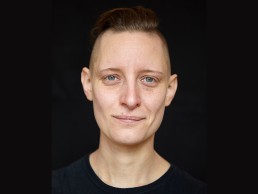
Satu Streatfield
Earlier this year, London Mayor Sadiq Khan appointed 42 new Mayor’s Design Advocates (MDAs) to support the city’s Good Growth by Design (GGbD) programme. Satu Streatfield is one of the new MDAs, joining as lighting designer and night-time strategist. Here, Streatfield tells arc more about the initiative.
What is London’s Good Growth by Design (GGbD) programme?
It’s been run by the Mayor’s office since 2017 to promote high quality design that serves all Londoners. The programme comprises research, projects and policies underpinned by six main pillars: Setting Standards and Informing Delivery; Ensuring Quality; Building Capacity; Supporting Diversity; Commissioning Quality; and Championing and Learning.
How do the MDAs help support this?
MDAs are drawn from a variety of sectors within the built environment profession, so bring a broad range of expertise to assist, advise and critique projects and policies, with a view to delivering the GGbD objectives. We support research, help steer design briefs, identify good practice and case studies, and help shape performance criteria for projects. MDAs also sit on the London Review Panel, reviewing projects that the Mayor is investing in or making a planning decision on.
What do you hope to bring to the programme?
Since 2020, I’ve led Publica’s work for the Greater London Authority’s (GLA) 24 Hour London team, supporting local authorities across London to develop evidence-based night-time strategies and projects, so the MDA role is expanding upon that work. A major part of my role is helping to ensure that the night-time experiences of London are considered as part of every new policy, plan, or design. Effectively, I want to help implement the ‘Night Test’, which London’s Night Czar and her team are promoting to create places, infrastructures and policies that support a diversity of social, cultural, and economic life at night. I hope to help developers, designers, and council officers think carefully about what their plans and designs look like after dark. It’s also about understanding how good design can help minimise conflicts and inequalities that might become more visible or pronounced at night. Those could relate to feelings of safety, access to spaces and activities, providing amenities and a safe commute home for night workers, or mitigating conflicts between night-time activity and residents wanting to sleep.
How significant is it that lighting design and night-time strategy has been included?
There’s a growing understanding of the importance of after-dark and night-time spaces, infrastructures, and communities to the cultural and economic health of the capital. Lighting design is increasingly recognised as a critical component of good urban design and a key tool in creating spaces that are accessible, welcoming, beautiful, fun and inspiring.
We’re seeing better cross-departmental working within local authorities since Covid and it’s really encouraging to see the importance of good lighting design and well-funded, sustainable lighting, recognised across the board.
Across the 42 MDAs, 55% are women and 45% come from Black, Asian and minority ethnic backgrounds. Do you feel this will help boost diversity within the design industry?
I certainly hope so, as the industry has a long way to go to be representative of the people it’s serving. As a society we’ve created systems and cultures that allow inequality to flourish. These disparities start from an early age and are based largely on where kids live, how much their parents earn, what school they go to, what they look like, etc. I think lighting design can provide a more accessible route into the industry as it attracts designers, technicians, and engineers from fairly diverse fields. Architecture, by comparison, requires a huge commitment of time and money that most cannot afford, and the culture of the profession puts a lot of people off. The GLA’s ‘Supporting Diversity’ handbook cites analysis suggesting that more than 90% of jobs in the creative economy are done by people in more advantaged socioeconomic groups, compared to 66% of jobs in the wider economy. When you look at those stats, it’s clear just how important it is to involve under-represented groups in designing and planning the city – women, disabled people, and those from households earning less than £20k a year feel least safe in London at night.
How important is such an initiative to London?
Having a group that brings a broad range of experiences, backgrounds and expertise to the review process is critical. I’m sure every lighting designer has joined a project and identified issues, opportunities, and challenges that hadn’t been picked up previously. So, it’s reassuring to know there’s a group helping to review projects and policies through different lenses.
Should this be replicated in other cities?
Every city is different and has its own governance structures and processes, but I think the principle of bringing together a group of built environment professionals offering a broad range of expertise from both the private and public sectors, along with people from community-led initiatives, is a great way to improve design quality and representation in the built environment.



